HTC One S Review
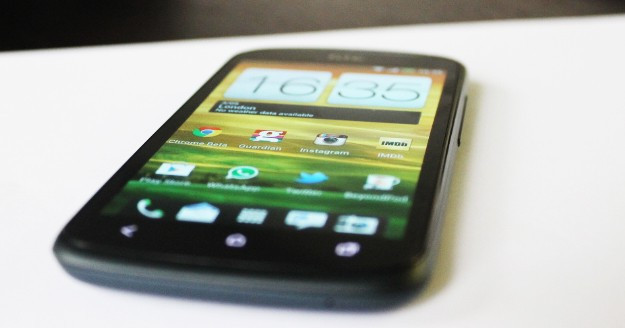
Key Features:
- 4.3in Super AMOLED 540 x 960 pixel display
- 1.5GHz dual-core Qualcomm Snapdragon Krait processor
- Android 4 .0 (Ice Cream Sandwich) with HTC Sense 4.0
- 16GB internal storage; 1GB RAM
- 8 megapixel camera with AF and LED flash
- Price as reviewed: Free on £21-a-month contract (Around £400 SIM free)
Introduction
A recent survey suggested that of the 37 or so phones launched at Mobile World Congress 2012 at the end of February, only 7 are currently available anywhere in Europe. The situation is even worse in the United States where only three of the 37 are available. However, HTC is the company which seems to be doing the best job of getting its new phones out there, by bringing its new One series to market quickly. And following up the launch of the flagship device in the One series, the HTC One X, comes the mid-range phone, the HTC One S.
Let's take a look and see if the One S suffers from middle child syndrome or if it stands out from its siblings:
HTC One S: Design and Build Quality

The HTC One S is really a successor to the HTC Sensation, which was the company's flagship device of 2011. The Sensation was not really a success in commercial or critical terms and HTC has gone back to the drawing board when coming up with the design for the One S.
The One S is the thinnest HTC phone ever. At just 7.8mm thin it is almost as thin as the waif-like Motorola Razr and HTC has done a superb job in making this phone feel more compact than it is. With a footprint of 131 x 65mm and 4.3in screen, the phone is certainly not small, but compared to the One X, it is noticeably more compact and easier to operate.
While a svelte profile is all well and good, it can sometimes lead to the phone feeling flimsy, as was the case with the Samsung Galaxy S2. This thankfully is not the case with the One S, as its all-metal body ensures the phone is sturdy with no sign of flex.

The HTC One S comes in grey and black versions. The black version has undergone a futuristic-sounding process called microarc oxidation, a process usually reserved for satellites to make sure they survive in the barren wastelands of space. The process basically means the phone gets a ceramic coating which HTC claims makes it all but impervious to scratches.
The grey version, which we are reviewing, has not been given quite the same treatment, but the aluminium unibody has a gradient anodized finish which gives the phone a nice soft-touch finish as well as a light-to-dark grey gradient as you look from top to bottom.
The front is dominated by a slab of Gorilla Glass covering the 4.3in qHD screen, below which sit three capacitive Android buttons for Back, Home and the App Switcher. The fourth menu button has been phased out since the launch of Android 4.0.
While it appears as if the screen is curved around the sides, in a similar way to the One X, this is not the case. HTC has cleverly used a raised black bezel to give the phone the look of a curved screen, but the result means the phone looks and feels great.
Located next to the HTC logo above the screen are the proximity and ambient light sensors. Above these is an almost unnoticeable double row of speaker holes, which have been micro-drilled into the aluminium unibody. Under the speaker grille is an LED indicator light, and next to this you'll find the front-facing VGA camera.
HTC One S: Connectivity

Connectivity on the phone is limited to a single port. On the left-hand-side is a microUSB port which can be used for charging and data transfer. It is also MHL compliant meaning if you have the right dongle (MHL to HDMI) you can hook up your One S to an HDTV to stream music, photos and movies.
On the right-hand side is a volume rocker which is ideally located three-quarters of the way up the left edge and was very responsive with decent feedback, so we knew when we pressed it, even if the phone was in our pocket. Sadly lacking from the left edge is a physical camera button.
As with the One X, we cannot understand why all smartphone manufacturers do not include this feature as standard. The Sony Xperia S makes great use of the physical camera button letting you take a photo within seconds of pressing it, even if the phone is locked.
Along the top edge you'll find the power/lock screen button and 3.5mm headphone jack. One of the issues we had with the One X was the difficulty reaching the power button with one hand, and while it's not the easiest on the One S, it is better and we were soon able to get to grip with it.

The rear of the phone is, as has become the norm for HTC phones, split into three sections. The middle anodized aluminium section is topped and tailed by a couple of blue/grey plastic panels. The panels themselves look fine and don't detract too much from the overall aesthetic, though why HTC persists with this trifecta approach to the rear panel, when a single rear cover would be better, is a mystery.
One of the reasons we guess, is so that we can take off the top plastic panel to get access to the Micro SIM slot, though the Lumia 800, iPhone and indeed One X solution of a spring-loaded tray on the side of the phone seems more elegant to us.
The Micro SIM is the only thing you have access to under the panel as there is no microSD card slot, meaning you're stuck with the 16GB internal storage.

Also embedded in the top panel is the 8 megapixel camera and LED flash. The surround of the camera has a blue accent and the whole enclosure sticks out a little bit from the rest of the phone, meaning you have to be careful not to scratch it.
We love the look and feel of the One S. It feels premium and even though it features a large 4.3in screen, it doesn't feel large or cumbersome in the hand. This is down to that slim profile of just 7.8mm and while some users have complained about the phone scratching easily, we haven't found this to be the case - and we haven't been exactly wrapping it in cotton wool every day.
HTC One S: Hardware, Battery and Performance
The fact that this is not the flagship smartphone from HTC in 2012 is most clearly seen by the processor. While the One X is a quad-core Tegra 3 monster, joining the likes of the ZTE Era and LG Optimus 4X, the One S has to make do with a dual-core CPU.
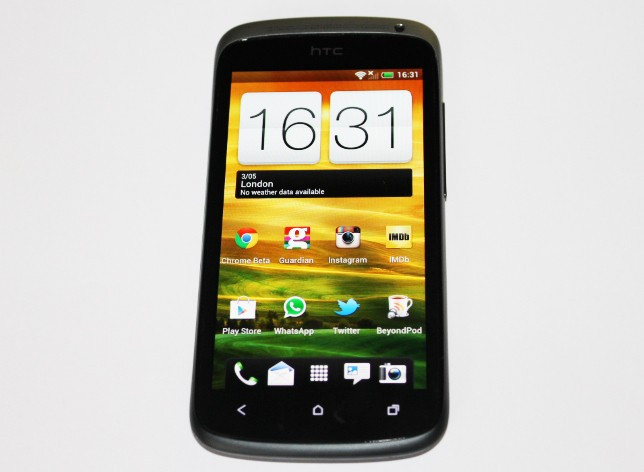
The One S is powered by a Qualcomm MSM8260A Snapdragon System-on-Chip (SoC) which features a dual-core 1.5GHz Krait CPU paired with an Adreno 225 GPU. This is all backed up by 1GB of RAM.
While this phone may not have a quad-core CPU, it really doesn't matter because it has something much more important - Android 4.0 (Ice Cream Sandwich). We'll get onto the interface in a while, but the combination of the latest version of Android and a more-than-adequate Snapdragon processor means the One S flies along.
Apple has always shied away from boosting the processor capabilities of its iPhones just for the sake of it, as tight software and hardware integration meant it didn't have to. With Ice Cream Sandwich, Google has finally got its act together and the results can be seen here.
There is no noticeable lag while navigating the UI and even when we had a number of apps open at once, there was no major slowdown in operation. Maps, web browsing, playing games and watching videos were all a piece of cake for the One S and we never found ourselves missing those extra two cores.
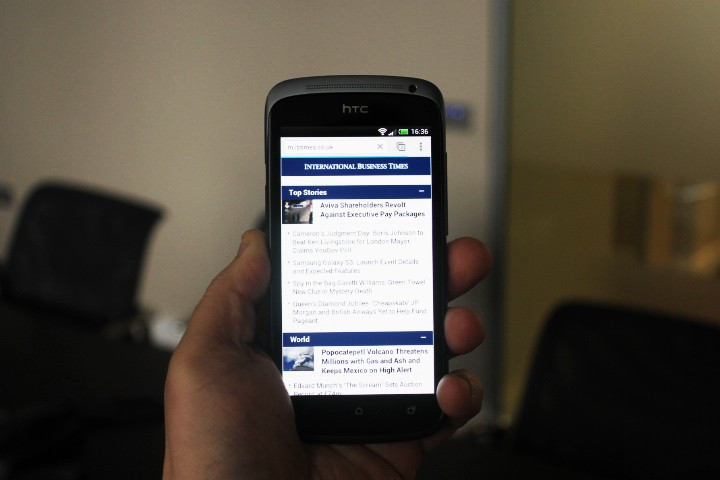
In terms of storage, we've already mentioned that there is no microSD card slot and so you are stuck with the 16GB you get from HTC. This gives you 2GB for apps and 10GB for general storage. For some this will be perfectly acceptable, but for others this is going to be a deal breaker and they will have to look elsewhere.
Of course one of the benefits Tegra 3 does bring is better battery life, thanks to its fifth companion core. The One S has a 1,650mAh battery compared to the 1800mAh battery in the One X, which like the One S is not user accessible.
However the One S managed, on average, a respectable 20-24 hours of life on a single charge during our two weeks with the phone. While still annoyingly low, it is on a par with most smartphones these days, and if you really want to extend the life of your One S, you can turn off Wi-Fi, dim the screen's brightness and limit using it to looking at it admiringly from across the room.
In terms of call quality, we found the eaerpiece to be nice and loud, though the clarity was at times not what we might have expected. Those speaking to us on the other end of the line reported a clear, crisp sound without very little background noise interference.
HTC One S: Screen

So far so good for the One S, but where we begin to see a few cracks is with the phone's 4.3in Super AMOLED display.
On initial viewing the phone's screen looks great. We put it up against the One X and the One S display is noticeably brighter and more vivid. This is what you get with AMOLED displays. They are bright, vivid and sharp. The 4.3in screen has a resolution of 540 x 960, and while not HD, it is still decent enough.
The problem with the display is down to the PenTile subpixel arrangement. Rather than the traditional red, blue, green (RGB) pixel arrangement, you get alternating red and blue/green and red pixels. This leads, on all such displays, to red and blue tinges appearing along the edges of text, icons and images.
For some this is not a major problem, but once you notice it, there is no getting away from it and you will not be able to look at the phone without noticing it every time you turn it on.
Another issue with the screen is contrast shift, as you can see in the comparison picture above. Look at the screen from anywhere off dead centre and a distinct blue hue will descend, which is very noticeable.
Finally, while the bright, vivid colours are nice to look at, the AMOLED screen tends to over saturate colours meaning the colour temperatures are completely off a lot of the time, leading to inaccurate and off-looking images.
HTC One S: Camera and Beats Audio
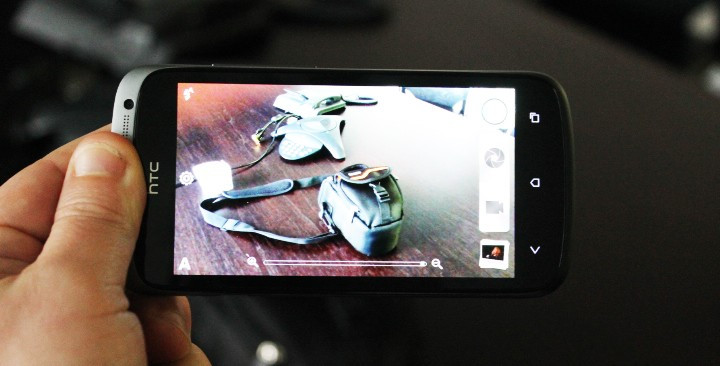
HTC has pegged the One range as having "Amazing camera. Authentic sound." Therefore we were expecting big things from the One S, especially considering how much we liked the camera on the One X.
The One S camera has an 8 megapixel sensor with autofocus and an LED flash. It is a noticeable step up from HTC cameras prior to the One Range bring introduced. The images produced (which you can see below, with more at the end of the review) are excellent quality with noise kept to a minimum though colours did tend to become oversaturated.

The camera is also capable of shooting 1080p video at 30fps and you can even snap stills while recording video. However if you want full 8 megapixel images while recording video, you'll have to turn off widescreen, meaning you'll have to frame your video in 4:3 rather than 16:9, which is not ideal.
The camera app is used for both stills and video with a simple toggle button letting you quickly switch between one and the other. The app interface is nice and clean leaving most room possible to frame you shot.
The effects button offers up a dozen or soon effects including Distortion, Vignette, Dots, Sepia or Country. There is also a mode button giving you access to the likes of Panorama mode, HDR mode, group portrait and low light.
Over all the results are more than acceptable for a smartphone and while the HTC One S won't replace a good point-and-shoot, it is a huge improvement over previous HTC cameras which may as well not have been there.

Turning to the Beat Audio integration, unfortunately this seem to be no more than a gimmick. Turning on the Beats Audio software simply seems to boost the bass and volume, making your music sound different rather than better.
While some HTC phones came with Beats headphones bundled with them last year, this has been discontinued with the One range, which is a shame as this was the only bonus of the Beats Audio tie-in HTC has committed to. That said the speaker on the rear of the phone is good if not amazing. If the Beats guys could manage to work their magic on HTC's speakers then the tie-in might have some worth in the future.
HTC One S: Ice Cream Sandwich and Sense 4.0
As we said before, one of the major pluses for the One S is the presence, from launch, of Android 4.0 (or 4.0.3 to be exact). As well as making the overall experience a lot faster, it brings with it some nice features.
Adding to this is the new HTC Sense 4.0 UI, which has been skinned on top of the basic Android interface. While Sense in the past has annoyed us, the latest version is far less annoying.
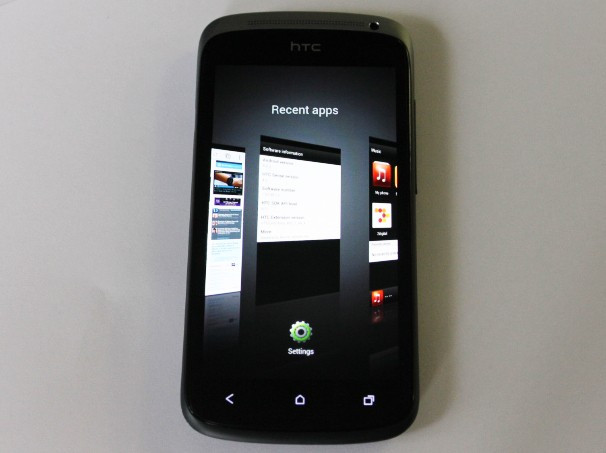
HTC has tweaked the lockscreen allowing you to jump straight into one of four customisable apps. This involves dragging the app into the ring at the bottom of the screen, and works well. You can put whatever app you want on the lockscreen, customisable through the Settings menu.
Launching into the main interface, you get a choice of seven customisable homescreens. On the main homescreen you'll seen the now-iconic HTC clock/weather widget, but if this isn't to your taste, it is easy to get rid of, and HTC provides a lot of alternatives for you to choose from.
In Sense 4.0, HTC has tweaked the way you place widgets and app shortcuts on the homescreen. Press and hold the homescreen you want to alter and a zoomed-out interface will appear, showing you all the widgets and apps available. It's a neat system and allows you to see what you have placed on all homescreens at once.

A new addition to Android 4.0 was the ability to switch quickly between apps by pressing the button on the right of the three capacitive buttons below the screen. On the HTC One X, this brings up a stylised version of the app switcher and while it looks good, it isn't the easiest to navigate and the plain ole Android version might have been better. You can flick open apps upwards to close them, in a similar fashion to the now defunct webOS.
HTC One S: Verdict
The One S is hard phone to categorise. On one hand it is a beautifully designed phone, with superb build quality, a slim 7.8mm profile, a decent camera, and good performance. However the screen is a bit of a let down and at £400 SIM-free it is hardly what you would call a bargin.
The One S can be had for £25-a-month on one of Vodafone's Business tariffs, which does represent genuinely good value, and for even less, £21-a-month, from T-Mobile. If you are willing to sign up for a two-year contract then we would definitely recommend getting the One S on these contracts.
When comparing the One S to the One X the main difference is the screen quality. The 4.7in Super IPS HD screen on the One X is a far superior screen but that extra 0.4in makes the One X a bit unwieldy and for many the One S will be a much more comfortable phone to use. As always, the decision is yours.
Scores:
- Overall: 8/10
- Battery: 8/10
- Design: 10/10
- Screen: 7/10
- Value: 9/10
The Good
- Slim 7.8mm profile
- Android 4.0 with Sense 4.0
- Fast performance
- Beautiful design
The Bad
- Poor screen
- Non-expandable memory limited to 16GB
- No physical camera shutter button
HTC One S: Camera Samples




© Copyright IBTimes 2025. All rights reserved.






















